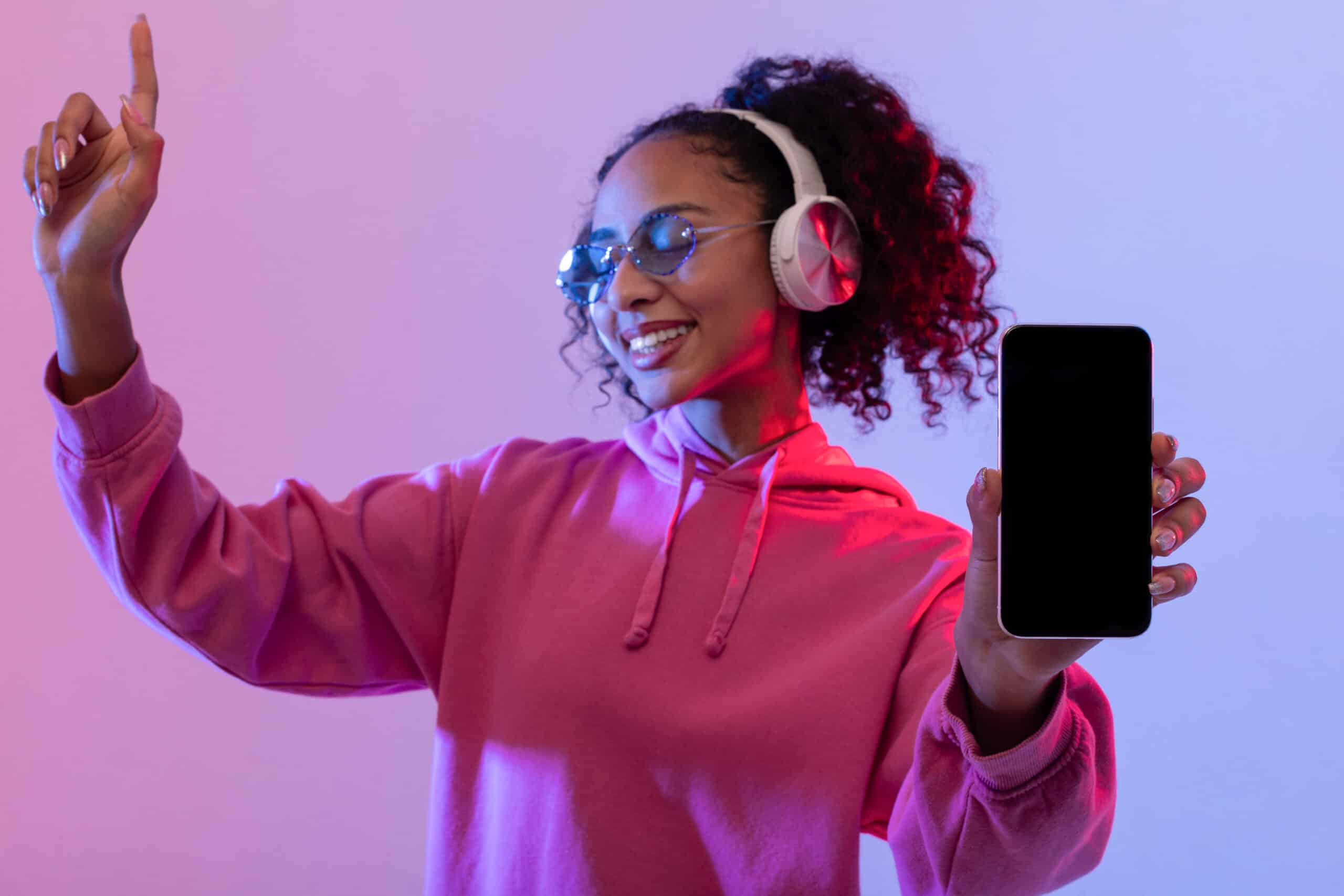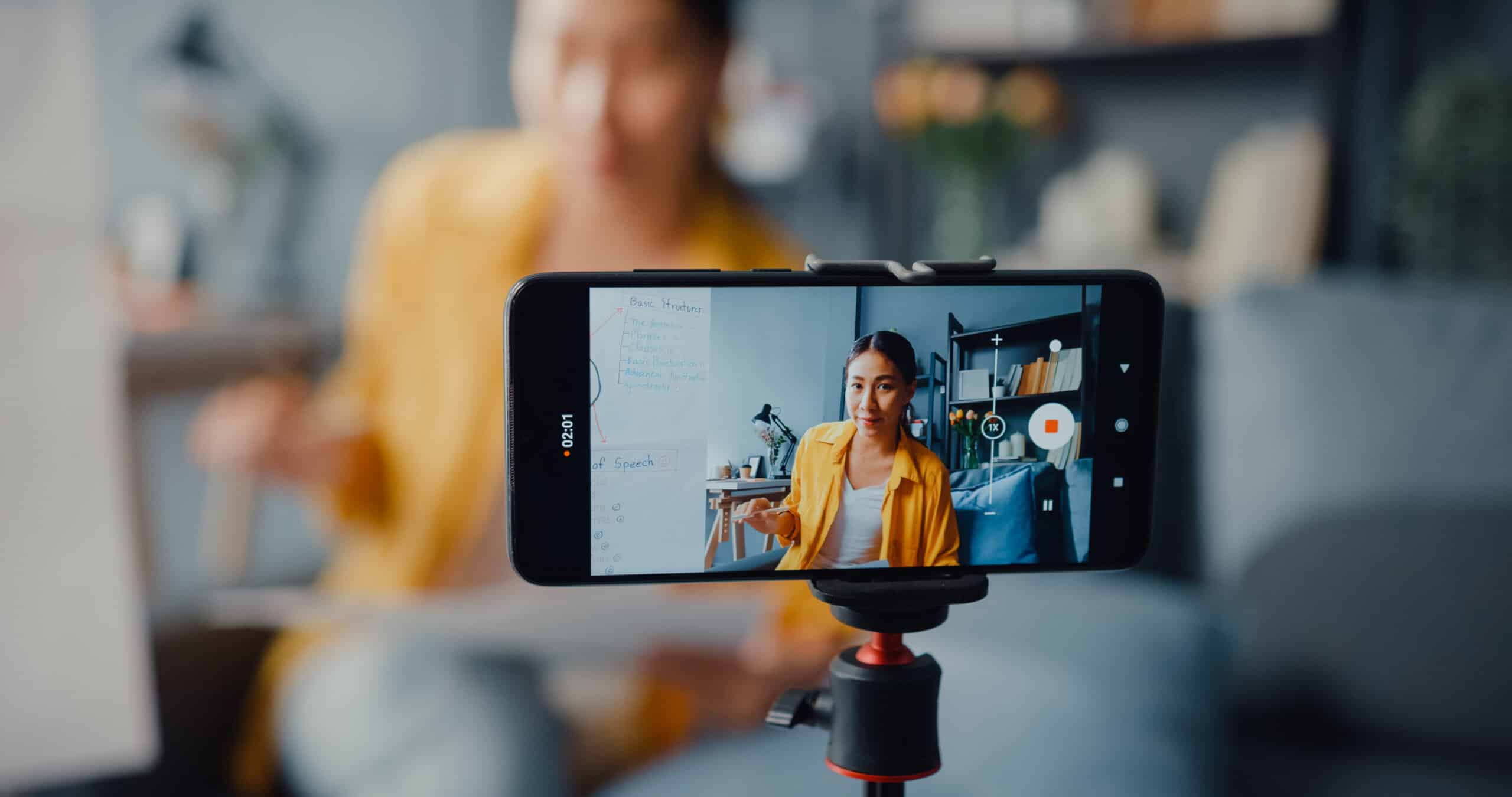Harnessing Google Lens: Expert Image SEO Tactics for Future Success
Imagine a world where your smartphone camera not only captures moments but also serves as a gateway to information, an idea rapidly becoming reality through Google Lens. Google Lens, a tool that translates visual data into actionable insights, has revolutionized the landscape of search engine optimization (SEO) by emphasizing the importance of image-based searching. In the realm of modern SEO, image optimization is no longer an option but a necessity for businesses striving to enhance their digital presence.
Understanding how Google Lens operates and impacts SEO is crucial for anyone looking to future-proof their strategies. As visual search technology evolves, the task of optimizing images becomes more complex, involving factors such as format selection, compression techniques, and AI integration. Moreover, integrating descriptive alt texts and schema markup are key tactics professionals utilize to ensure images rank higher and reach broader audiences.
This article delves into expert tactics for optimizing images, with a focus on leveraging Google Lens efficiently for future success. By exploring the integration of AI in visual search and adapting traditional strategies, we provide actionable insights on enhancing image visibility and discoverability. As visual and voice searches rise alongside zero-click trends, this piece equips readers with the tools and knowledge to navigate the evolving SEO landscape, ensuring images are not only seen but serve as powerful drivers of engagement and conversion.
Understanding Google Lens and Its Impact on SEO
In an era where visual search is rapidly gaining momentum, Google Lens has emerged as a pivotal tool in redefining search dynamics. With approximately 12 billion searches processed each month, this generative AI app enables users to access information through image analysis rather than traditional text-based queries. This shift highlights the rising importance of image SEO for businesses.
Impact and Strategy:
- Enhanced Visibility: By optimizing visual content with descriptive alt text, proper file naming, and structured data, marketers can significantly improve their content's visibility on Google Lens. This is crucial for enhancing user experience and engagement, particularly in the e-commerce sector.
- Competitive Advantage: Businesses leveraging Google Lens's capabilities are better positioned to gain a competitive edge, as visual search becomes indispensable for reaching more audiences effectively.
- SEO Benefits: Effective image SEO practices align with broader SEO efforts, helping to reduce bounce rates and improve Core Web Vitals.
In conclusion, as visual search continues to evolve, understanding and implementing optimization strategies for Google Lens can lead to substantial benefits in search engine visibility and user engagement.
Importance of Image Optimization in Modern SEO
In today's digital landscape, image optimization has become a cornerstone of modern SEO strategies. As visual content gains prominence in search engine results pages (SERPs), traditional SEO methods must evolve to engage AI-powered visual search algorithms effectively. Visual search queries are on the rise, making it imperative for businesses to optimize images to enhance visibility and rankings. This involves focusing on Google’s advanced image understanding capabilities.
Image optimization tools are indispensable, automating tasks like compressing and resizing images to ensure swift loading times and improved SEO performance. These tools are vital in maintaining website efficiency and reducing bounce rates. Additionally, images must be optimized with relevant keywords and alt descriptions to enhance their searchability.
Key Elements of Image Optimization:
- File Types: Use formats like AVIF for better compression.
- Alt Text: Follow Accessibility Alt Guidelines for improved context.
- Metadata: Employ IPTC Metadata Tags for comprehensive image information.
- Lazy Loading: Implement Lazy-Load Placeholders to enhance site speed.
- Privacy Controls: Utilize EXIF Privacy Controls to protect user data.
Adapting to these image SEO practices can significantly enhance a website’s visibility and engagement, ensuring it meets the demands of increasing visual search activities.
Choosing the Right Image Format for SEO
Choosing the right image format is pivotal for robust SEO performance. In the era of visual search, formats like AVIF and WebP are invaluable. These next-generation formats enhance image loading times, outperforming traditional JPEGs and PNGs. This results in improved search engine performance and reduces bounce rates by maintaining sleek user experiences.
For featured blog images, JPEGs strike an excellent balance between quality and compatibility, making them a reliable choice. Meanwhile, PNGs shine in scenarios demanding detail and transparency, offering versatility that can be crucial in specific contexts.
Here's a quick comparison:
| Image Format | Best Use Case | SEO Benefit |
|---|---|---|
| AVIF | Modern visual platforms | Enhanced loading speeds |
| WebP | Fast-loading websites | Improved user experience & SEO |
| JPEG | Quality blog images | Balanced quality and compatibility |
| PNG | Images needing detail/transparency | Versatility for niche SEO applications |
Integrating these formats effectively requires understanding context and intent. Tailor your choice to suit user needs, leveraging formats that bolster your overall image SEO strategy to fully engage with impactful features like lazy-load placeholders and Core Web Vitals.
Image Compression Techniques without Losing Quality
In the realm of image SEO, leveraging the right compression techniques is pivotal for improving loading times and overall SEO performance. Two leading image compression formats, WebP and AVIF, have proven essential for web optimization. Both formats offer superior compression without sacrificing image quality, making them ideal for enhancing user experience and search engine optimization. Google endorses AVIF files for Search, Images, and Discover, standing alongside WebP as key tools in image optimization.
JPEGs continue to hold their ground for featured blog images due to their balance of quality and file size. Meanwhile, PNG files are preferred where versatility, detail, and transparency are critical, like in logos and graphics with text.
Image Compression Techniques:
| Format | Use Case | Strength |
|---|---|---|
| WebP | General web images | Superior compression |
| AVIF | High-res images | Advanced compression |
| JPEG | Blog images | Quality balance |
| PNG | Transparency needs | Detail-retention |
Effective image optimizers streamline compression tasks, maintaining quality while improving performance. Key features to consider include batch processing, which is invaluable for sites with extensive image libraries. By choosing the right optimizer, webmasters can efficiently save time, reduce bounce rates, and align with Google’s Core Web Vitals guidelines.
Writing Descriptive Alt Texts for Better Searchability
Writing descriptive alt text is crucial for enhancing the searchability of images. Alt text serves multiple roles: it aids search engines in indexing images, improves accessibility for visually impaired users, and can increase an image's ranking in search results.
A well-crafted alt text provides search engines with contextual information, helping them categorize and display images more effectively. This is especially important in the age of Google Lens and other visual search tools, where optimizing images with relevant keywords can significantly impact user engagement and help reach target audiences.
Consider these best practices for writing effective alt texts:
- Be Descriptive and Specific: Clearly describe the image, focusing on its essential elements.
- Use Relevant Keywords: Incorporate keywords naturally to align with search queries without keyword stuffing.
- Maintain Accessibility: Ensure that the description supports screen readers, enhancing the experience for users with disabilities.
- Prioritize Context and Accuracy: Reflect the image content truthfully to aid in appropriate search engine ranking.
By following these guidelines, content teams can improve user experience and effectively leverage image SEO within their overall digital strategy.
Utilizing Schema Markup for Enhanced Image Visibility
Utilizing schema markup is a powerful strategy for enhancing image visibility in search results. Schema.org's ImageObject and Product schemas provide contextual details about images, enabling search engines to better interpret and elevate their presence in search outcomes. This structured data acts as a cheat sheet, translating website content into a format that search engines can easily comprehend.
Implementing ImageObject schema markup explicitly helps search engines understand images. This understanding allows images to feature prominently in search results, snippets, or knowledge panels. By making content more accessible to search engines, schema markup not only improves ranking opportunities but also boosts visibility in response to relevant queries.
Schema markup's role in enhancing search engine visibility can be encapsulated in a simple list:
- Improves Image Interpretation: Search engines grasp image context better, elevating visibility.
- Boosts Search Outcomes: Increases chances of featuring in knowledge panels and snippets.
- Connects with Relevant Queries: Links images with pertinent search queries, enhancing exposure.
These benefits underscore the importance of incorporating schema markup as part of an effective image SEO strategy. By bridging the gap between content and search engines, schema markup significantly enhances the potential for image visibility and search success.
The Rise of AI in Visual Search
The rise of AI in visual search is transforming user interactions with search engines, providing a more intuitive experience than traditional text-based queries. With AI integration, visual search technologies have enhanced search accuracy by 40%, improving user satisfaction and driving conversions. Smartphones equipped with high-quality cameras have further fueled this evolution, making visual search more accessible.
Key Elements Driving AI in Visual Search:
- Visual and Text Analysis: AI processes both visual and textual data, offering comprehensive insights from uploaded images.
- High-Quality Visuals: Importance of high-resolution images and descriptive alt text for visibility in visual search engines.
- Structured Data: Crucial for businesses to implement for improved search engine optimization.
| Aspect | Importance |
|---|---|
| High-Quality Visuals | Enhances visual search results |
| AI-Powered Analysis | Integrates visual and text data |
| Structured Data | Boosts SEO visibility |
As AI continues to shape the landscape, businesses must evolve their approach to leverage the full potential of visual search.
Adapting Traditional SEO Strategies for Visual Search
Adapting traditional SEO strategies for visual search requires a paradigm shift in how businesses approach their content. Unlike text-based SEO, visual search, especially on platforms like Google Lens, emphasizes image quality and uniqueness. Here’s how you can effectively pivot your strategy:
Key Focus Areas:
- High-Quality Images: Using professional photography ensures that images are distinct and easily indexed by search engines.
- Collaboration: Foster teamwork across digital marketing, content creation, SEO, product management, and e-commerce to seamlessly integrate visual capabilities.
- Technical Implementation: Invest in the technical aspects, such as AVIF compression and IPTC metadata tags, to ensure your images meet the latest technological requirements.
- Integrated Workflows: Align visual content development with search performance goals from the start to maximize impact on user engagement and search engine rankings.
Visual Search Optimization Checklist:
- Use high-resolution, unique images.
- Incorporate relevant keywords in image descriptions and metadata.
- Ensure accessibility with alt text following Accessibility Alt Guidelines.
- Implement Lazy-Load Placeholders to improve load speeds and Core Web Vitals.
- Protect privacy with EXIF Privacy Controls.
By focusing on these areas, businesses can enhance their visual search strategy, ultimately improving user experience and capturing more opportunities in the evolving landscape of search engines.
Leveraging AI-Generated Content Responsibly
Leveraging AI-generated content responsibly involves blending automation with the indispensable human touch. While AI can proficiently manage basic tasks like keyword optimization and content structure, human creativity remains vital for crafting authentic, relatable material that resonates with audiences. Embracing AI-powered SEO tools can notably boost the efficiency of content optimization efforts, significantly enhancing user engagement and search engine rankings.
To harness AI's full potential, deliver hyper-personalized experiences by dynamically tailoring content based on user behavior. This approach not only elevates user engagement but also strengthens brand-audience relationships. AI-driven content personalization is key to fostering these connections, as it caters to individual user preferences and needs.
AI-Powered Content Personalization Benefits:
- Enhanced user engagement
- Stronger brand-audience connections
- Improved search engine rankings
Despite AI's automation capabilities, skilled users must supervise and collaborate with these tools to ensure effective and meaningful outcomes. The balance between AI and human intervention is crucial for producing content that is not only optimized but also genuinely engaging. Always remember, while AI can enhance technical aspects, the human touch is essential for emotional and relational depth in content creation.
Exploring New Discovery Channels: Visual and Voice Search
By 2025, optimizing for visual search tools like Google Lens will be crucial in SEO strategies, as search becomes increasingly multi-modal. This shift demands a strategic focus on both visual and voice search. With over 1.3 billion monthly users, voice search optimization relies heavily on long-tail conversational keywords, enhancing content's relevance and reach.
For visual search tools, descriptive image alt texts and the use of schema for "how-to" content can significantly improve visibility. Proper file naming and alt text descriptions enhance not only visual but also voice search optimization. Incorporating these elements increases content accessibility and relevance across search engines.
A concise strategy includes:
- Descriptive Alt Texts: Improve visibility in both visual and voice search.
- Schema Markup: Use for "how-to" and Speakable Schema in FAQs to boost discoverability.
- Long-Tail Keywords: Essential for capturing voice search queries.
| Strategy Component | Impact |
|---|---|
| Descriptive Alt Texts | Enhances visibility in visual searches |
| Schema Markup | Boosts findability for voice assistants |
| Long-Tail Keywords | Optimizes content for voice search |
Embracing these elements in your SEO strategy will ensure your content remains discoverable in the evolving landscape of search technology.
Advanced SEO Tools for Image Optimization
In the evolving landscape of search engines, image optimization has become pivotal, especially with tools like Google Lens now facilitating nearly 12 billion searches monthly. To capitalize on this, leveraging advanced SEO tools for image optimization is essential.
High-resolution images, coupled with proper file naming and descriptive alt text, enhance visibility in visual search engines. Implementing Accessibility Alt Guidelines ensures that your images are both user-friendly and SEO-efficient. Moreover, IPTC Metadata Tags and Gemini Alt Descriptions fine-tune image details, aiding search engines in better understanding the content.
💡 Pro Tip: Combine Lazy-Load Placeholders with mobile-friendly AVIF compression to improve Core Web Vitals and reduce bounce rates.
Consider tools that provide Visual Search Analytics and SGE Image Annotations, which can offer insights into user engagement and intent. Integrating EXIF Privacy Controls is also essential to protect sensitive data while still optimizing images for search visibility.
Incorporate these strategies into your visual search optimization playbook to achieve better rankings and improved user experience on platforms like Google Lens.
Ensuring Seamless User Experience Across Devices
In the ever-evolving digital landscape, ensuring a seamless user experience (UX) across devices is paramount. SEO specialists must integrate UX with SEO strategies to facilitate a smooth user journey. This requires cross-functional collaboration; SEO teams should partner with web developers to optimize mobile usability, thereby enhancing overall user interaction.
A crucial component of this process is Image SEO. Tasks like resizing and compressing images are essential for maintaining seamless visual interactions on various devices. These efforts support a consistent and engaging user experience, reducing potential bounce rates.
Moreover, the transition from Google's First Input Delay (FID) to the Interaction to Next Paint (INP) metric allows for more accurate measurement of webpage response times, further impacting UX rankings. Regular meetings focused on sharing analytics data enable SEO teams to refine strategies based on data-driven insights.
To summarize the essentials for a seamless user experience:
- Cross-Functional Collaboration: SEO and web development teams work together.
- Image Optimization: Resize and compress images for all devices.
- Utilize Updated Metrics: Focus on INP for accurate UX measurement.
- Data-Driven Strategies: Regular analytic insights guide improvements.
Addressing Zero-Click Searches in SEO Strategy
In the evolving landscape of 2025, zero-click searches are anticipated to account for nearly 60 % of all Google searches. This trend emphasizes the importance of crafting an SEO strategy that maintains brand visibility without relying on traditional click-throughs.
To capitalize on zero-click search interactions, businesses should focus on appearing in featured snippets, AI Overviews, and knowledge panels. Key tactics include providing clear, direct answers, utilizing bullet points for scannable content, and integrating structured data to optimize visibility.
Strategies to Capture Zero-Click Opportunities:
- Featured Snippets: Craft concise, informative answers that directly address common queries.
- AI Overviews & Knowledge Panels: Use rich media and structured data to enhance visibility in these sections.
- Structured Data: Implement schema markup to improve how search engines interpret and display content.
- Bullet Points & Lists: Format content for quick comprehension and user engagement.
Zero-click doesn’t equate to a lack of opportunity. Instead, it offers a platform for businesses to build brand recognition and trust directly on the search results page.
Embracing Personalized and Predictive Search Functions
Search engines are evolving, increasingly leveraging machine learning to enhance the intuitiveness of search results. By analyzing user behavior and preferences, predictive search delivers more personalized and relevant outcomes. This shift necessitates a future SEO strategy that aligns closely with user preferences, utilizing AI insights to craft personalized content experiences.
Key Components of Predictive Search:
- User Behavior Analysis: Understanding user interactions to tailor results.
- AI-Driven Insights: Leveraging AI to enhance content personalization.
- Trend Identification: Employing analytics tools to spot and adapt to trends.
Benefits of Predictive Search include enhanced user engagement, higher relevance in search results, and improved content strategy focused on user intent.
Implementing Targeted Image SEO Tactics
Implementing targeted image SEO tactics is essential in maximizing your visibility across visual search platforms like Google Lens. With over 12 billion searches occurring monthly, optimizing images for search engines is more important than ever.
A checklist for effective image SEO includes:
- Descriptive Alt Text: Use relevant keywords to describe images accurately.
- Proper File Naming: Rename files with keywords instead of generic names.
- High-Quality, Unique Images: Invest in original graphics to stand out.
- EXIF Privacy Controls: Manage metadata to protect privacy while providing necessary information.
| SEO Strategy | Benefit |
|---|---|
| AVIF Compression | Faster load times |
| Accessibility Alt Guidelines | Improved accessibility |
| IPTC Metadata Tags | Enhanced metadata accuracy |
| Lazy-Load Placeholders | Better user experience |
Monitoring and Adapting to SEO Trends
Staying ahead of SEO trends is vital for maintaining competitiveness in today's dynamic search engine ecosystems. As we move through 2025, AI-powered tools are revolutionizing SEO by automating tedious tasks and enabling marketers to concentrate on strategic, creative planning. A significant shift in Google's algorithm emphasizes User Experience (UX) as a core factor, compelling businesses to prioritize seamless interactions.
Key Adaptation Strategies:
- Monitor visual search analytics and optimize for Google Lens.
- Employ high-resolution images with proper techniques such as AVIF compression.
- Ensure content meets Accessibility Alt Guidelines.
- Incorporate voice search optimization and long-tail keywords.
Case Studies: Successful Image SEO Implementations
Image SEO is transforming how businesses engage with their audience and drive financial success. Here are some real-world case studies:
- Jewelry Maker's Sales Surge: A 25 % increase in sales through lifestyle photos.
- Optimized Outdoor Exploration: 15 % reduction in bounce rate via image size optimization.
- Automated Image Management: Streamlined processes through integrated tools.
| Implementation | Result |
|---|---|
| Lifestyle Photos | 25 % Sales Increase |
| Image Size Optimization | 15 % Reduced Bounce Rate |
| Automated Tool Integration | Streamlined Processes |
Future-Proofing Your SEO Strategy with Image Optimization
As we move towards 2025, enhancing your SEO strategy with image optimization is more critical than ever. With over 62 % of consumers gravitating towards visual searches, businesses must prioritize image SEO to capitalize on this trend.
- Utilize IPTC Metadata Tags to enhance image context.
- Apply AI-powered tools for efficient generation of alt text.
- Leverage EXIF Privacy Controls to manage user data appropriately.
Conclusion and Final Thoughts on Visual Search Trends
Visual search is poised to revolutionize user experience and elevate search engine rankings across industries. The shift toward visual search is driven by its ability to deliver immediate and intuitive results, with 62 % of consumers favoring it over traditional text queries. Non-retail visual searches have also surged by 76 % since 2023, underscoring the expanding importance of visual discoverability.
Key Takeaways:
- Consumer Preferences: 62 % prefer visual over text search.
- Increase in Non-Retail Searches: Up 76 % since 2023.
- Optimization Strategies: Focus on descriptive alt text and metadata.
- Future Trends: Integration of 3D, AR, and multimodal inputs.
Embracing visual search trends is crucial for staying competitive and enhancing user engagement, as it is set to become an integral component of the digital landscape.
















